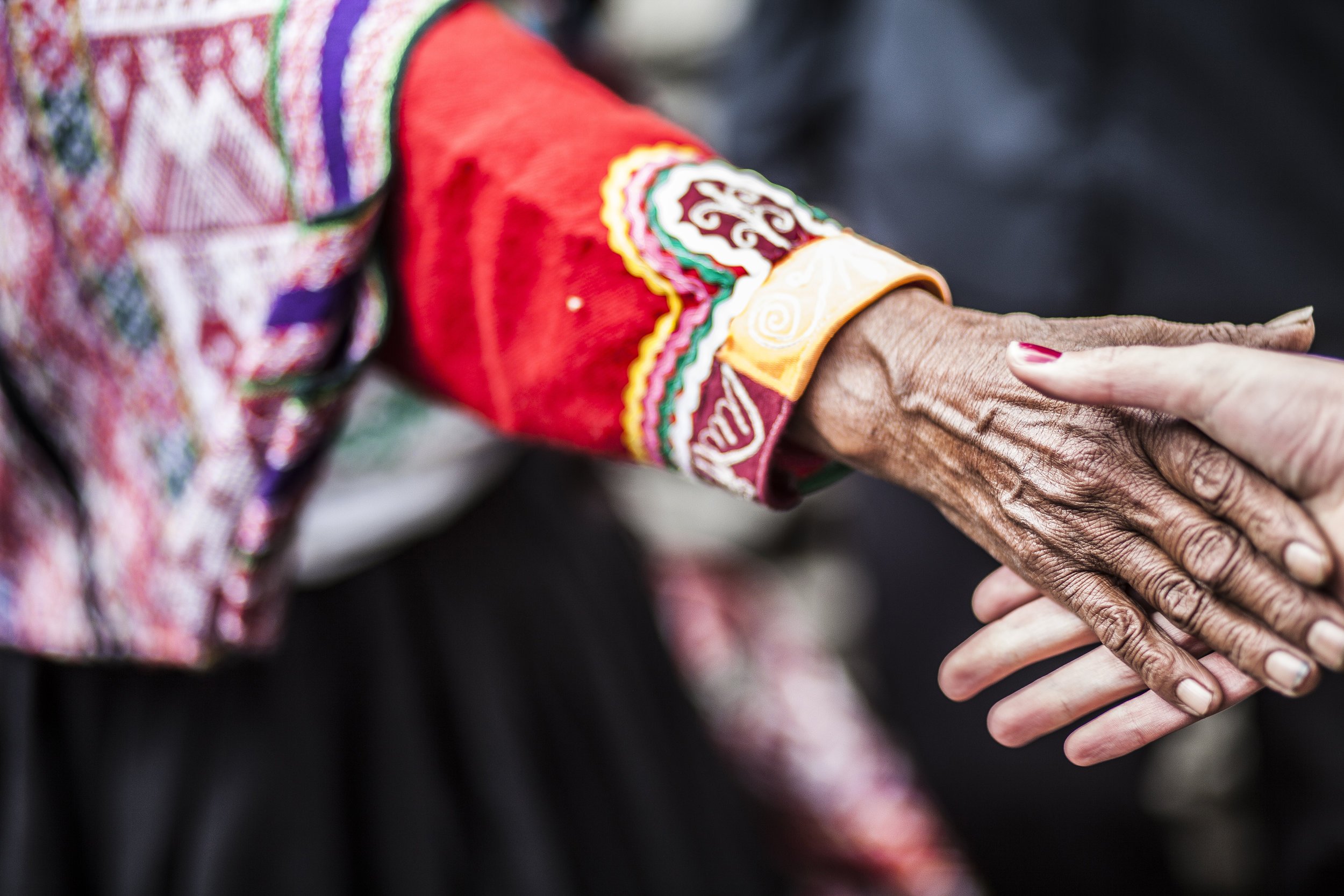The Norway trekking Travel Guide
Everything you need to know about trekking in Norway with Root Adventures!
Embark on an unforgettable journey through Norway's breathtaking landscapes.
Our Norway Trekking trip offers a unique blend of rugged natural beauty, rich cultural experiences, and mindful exploration.
To ensure you're well-prepared for this adventure, we've compiled essential information to guide you through your journey!
The Weather
How should I dress?
Norway's weather can be unpredictable, especially in mountainous regions. During the trekking season, you can anticipate:
Daytime Temperatures: Ranging from 50°F to 70°F (10°C to 21°C)
Nighttime Temperatures: Dropping to 40°F (4°C) or lower
Precipitation: Frequent rain showers; waterproof gear is essential
Packing Tips:
Dress in layers to adapt to changing conditions
Waterproof outerwear is a must
Don't forget gloves and a warm hat for chilly evenings
The gear
What do I need to bring?
On the third day of this trip we’ll begin the trekking portion of the adventure!
Everyone will carry their own backpacks with personal clothing, toiletry bag, water and food for 3 days. All the rest of the items that we will need will be available in the unmanned cabins.
This means you will need a medium to big size backpack of approximately 80 liters Liters.
You can find a detailed packing list here. We will also go over gear in much more detail on our two pre-trip calls.
Key items include:
Clothing: Moisture-wicking base layers, insulating mid-layers, waterproof jacket and pants
Footwear: Sturdy, broken-in hiking boots
Accessories: Hat, gloves, sunglasses, and a refillable water bottle
Other Essentials: Sunscreen, insect repellent, personal medications
Sustainability Tip:
Sustainability is one of our core-pillars, so we love to suggest sourcing gear from friends/family or second hand stores that sell lightly used gear! If you’re buying gear new, we recommend shopping locally or from small companies in whose mission you believe. Check the packing list for some of our favorites!
Preparing For Your Trek
How difficult is this really going to be?
Expect for this trek to be challenging! But with challenges comes great rewards like incredible views, the satisfaction of pushing yourself physically and mentally, and strong friendships formed.
We classify this trip a level 5 out of 5. This means that prior hiking experience is required. Expect long hikes, significant elevation gain, variable terrain and weather conditions.
We absolutely recommend preparing yourself physically before showing up for this adventure. It is recommended that you do practice hikes, walks, or strength and cardio conditioning to prepare. When you sign up you’ll receive a training plan.
Challenge Level:
Participants should be prepared for:
Daily hikes ranging from 6 to 12 miles (10 to 20 kilometers)
Elevation gains of up to 3,000 feet (900 meters)
Varied terrain, including rocky paths and steep ascents
Variable weather: it’s not uncommon to see all seasons when trekking in the summer in Norway!
Preparation Tips:
Engage in regular cardiovascular and strength training exercises
Practice hiking with a loaded daypack
Break in your hiking boots before the trip
We know, you don’t want to be the last one or hold up the group…we hear this before every trip! However, please know that we consider our group to be a team, working together on each hike. This is an incredible opportunity to ask for help and support when perhaps in your daily life you’re always the one giving it.
Our local guides and Root Tour Leader will be checking in with the group along the way and will be adjusting pacing as needed. Let’s do this thing together!
Accommodations
Where am i sleeping?
Experience the charm of Norway through a mix of accommodations:
Iglo Dome Tents: Cozy stays with stunning views. The iglo dome tents have heating/air conditioning (driven by green waterpower energy) and very comfortable beds.
Traditional Huts: Immerse yourself in local culture. The huts have beds available, blankets, outhouse, water from the stream, wood, stove, all cooking gear and cups and plates.
Eco-Friendly Hotels: Comfortable amenities with sustainable practices.
Each lodging option is selected to enhance your connection with Norway's natural and cultural heritage.
Check the itinerary for more details on each location.
Do as the locals do
a crash course in the local culture of Norway
It’s important at Root that when we travel we travel with an open mind and are respectful to the local ways, traditions, and customs. Keeping in mind that we are ambassadors of the US when we travel to foreign countries, it can be helpful to be prepared with some basic knowledge!
Language: The official language is Norwegian, which has two written forms: Bokmål and Nynorsk. Most Norwegians speak fluent English, especially in urban and tourist areas, so communication is generally easy for English-speaking travelers.
Currency: Norway uses the Norwegian Krone (NOK).
Credit and debit cards are widely accepted—even for small purchases—so you won’t need much cash. Mobile payments like Vipps are popular among locals.
Greetings: A firm handshake and direct eye contact are the standard greeting. Norwegians are friendly but reserved, so don't expect lots of small talk at first. First names are usually used quickly, but formal titles are not common.
Dress Code and Table Manners: The style is practical, minimalist, and outdoorsy. Think layers, muted colors, and functional gear. Norwegians have a deep love of nature and dress accordingly—weatherproof jackets, wool sweaters, and hiking boots are very common. Even in cities, fashion tends to be casual yet stylish, with a focus on quality and sustainability.
Punctuality is important—arrive on time for meals or social gatherings. Wait to start eating until the host says "Vel bekomme" (similar to "bon appétit"). Keep your hands visible on the table (but not elbows). Knife and fork are used in the Continental style (fork in the left hand, knife in the right). It’s polite to finish everything on your plate. Tipping isn’t obligatory, but rounding up or leaving 5-10% is appreciated in restaurants.
Photography: Norway is a photographer’s dream, and it’s fine to take photos in most public places. Always ask permission before photographing people, especially in small communities or remote areas. Be mindful around children and private property, and avoid drones in national parks or protected areas without permission. Respect signs that prohibit photography, especially in cultural or religious spaces.
Public Behavior: Keep noise levels low, especially in public transport, restaurants, and accommodation. Don’t push for personal details or conversation—Norwegians value personal space and privacy. Be aware of the strong culture of “friluftsliv” (outdoor life)—respect nature, follow marked trails, and leave no trace. Follow rules and signs strictly—there’s a high level of trust and civic responsibility in Norwegian society. Recycle and dispose of waste properly—Norway is very environmentally conscious.
Any other cultural things to be aware of?
The Right to Roam (Allemannsretten): You can hike and camp freely on uncultivated land, but be respectful and stay at least 150 meters from the nearest house or cabin.
Equality is key—Norwegian society is non-hierarchical and gender-equal. Be respectful in speech and action.
Humble and understated: Bragging or showing off is generally frowned upon.
Shoes off indoors: It’s customary to remove your shoes when entering someone’s home—and sometimes even in some hotels or lodges.
No Trace Left Behind
Let’s Talk Poop
There’s no way around it. Yes, you’ll be going #1 (and possibly #2) in the great outdoors!
While your trekking there will be no access to showers or toilets. Your guides will show you how to practice “leave no trace” practices for elimination on trails and outdoors. Once you arrive at your overnight accommodations there is a portable toilet and hot water basins in the morning to freshen up, but a full shower will have to wait until Day 7!
We recommend purchasing a Kula Cloth and bringing along biodegradable wipes for “camp” showers, aka a quick wipe down.
Mindfulness
What if I’ve never meditated?
Have no fear! No prior meditation or mindfulness experience needed.
Nature is the ultimate teacher. Just getting out into the great outdoors has been proven to be incredibly beneficial for your mental and physical health.
Your Root Tour Leaders will provide you with simple and practical ways to keep your connection with nature, yourself, and your fellow travelers at the forefront of your experience.
But don’t worry, this won’t be a serious or quiet trip. At Root we see mindfulness as a way to participate in the ALIVENESS of life.
There will be moments you’ll be encouraged to observe silence, listen to nature, reflect on your internal experience or even possibly journal and share. And there will be many moments of raucous laughter, joyous storytelling, and playing in the dirt. Our trips have a little bit of everything!
To help you get the most out of your experience you will receive a pre-trip guide that has mindfulness and meditation practices, potential journaling prompts, and thoughtful ways to connect with nature throughout your adventure.
Final Tips
Anything else I need to know?
We’d love to impart some final words of wisdom for you here. These are tips and tricks we’ve learned over the years exploring, trekking, and guiding groups.
Pack light! The lighter the better. We cannot stress this enough! When packing ask yourself this question: “Do I absolutely need this?” If the answer is no, leave it behind.
Don’t wait to get your hiking boots! Purchase them well in advance of your hike and go for practice walks to wear them in.
Bring an extra Nalgene to use as extra heat at night. Boil some water, secure the lid on your Nalgene and pop it in the bottom of your sleeping bag for a toasty warm night.
There are definitely handy-dandy camp pillows, but you can also stuff your sleeping bag sack with clothes, jackets, etc that you brought with you for a makeshift pillow.
Tell your guides if you have a “hot spot” forming on your feet while hiking. They can help! Hot spots are red tender areas that appear before blisters form. The keyword here is before! Telling your guide early can help prevent blisters from forming.
A word about luggage. If possible, pack so that you can bring everything in a carry-on. That way if your luggage gets lost (knock on wood) you won’t be trying to piece gear together or purchase lots of expensive items last minute. If you are checking luggage then we recommend wearing your hiking boots and packing hiking essentials in your carry-on just in case!









